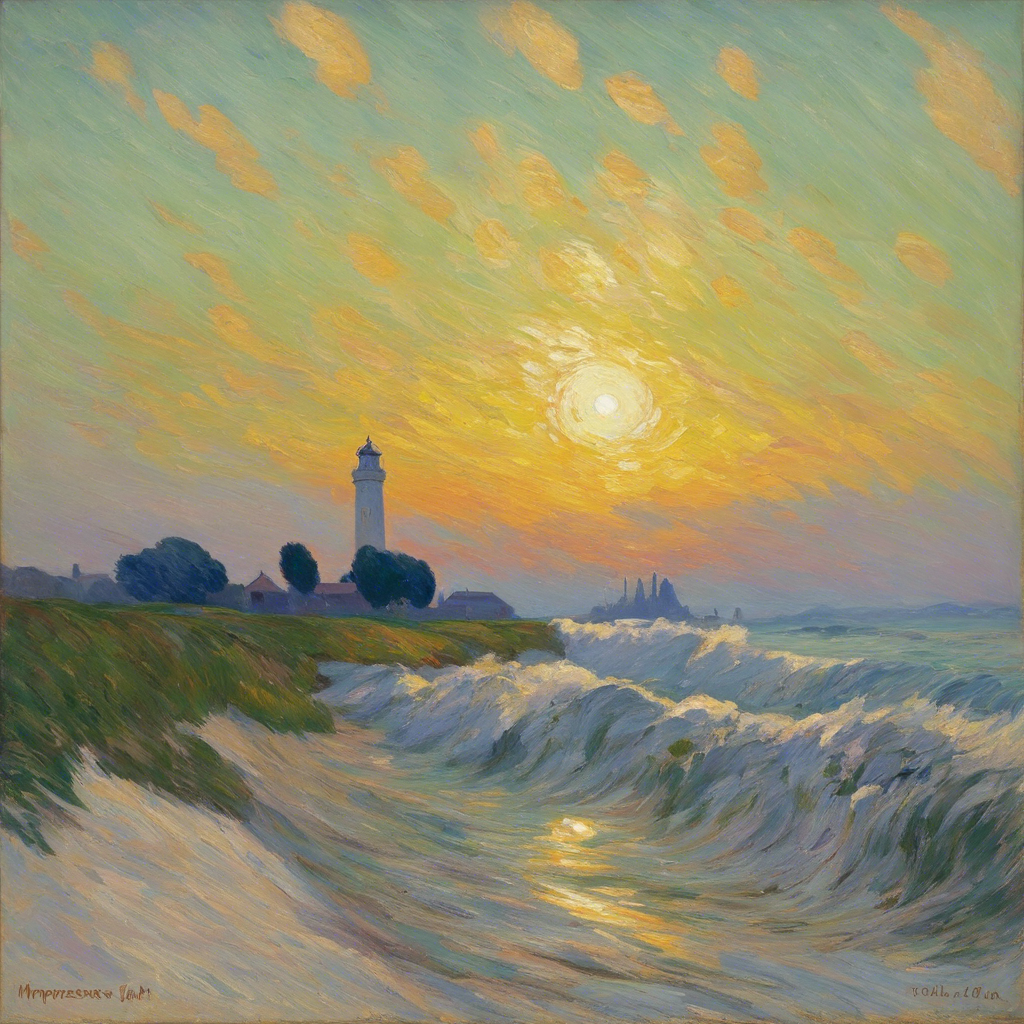The mesmerizing world of Impressionism continues to captivate art enthusiasts worldwide, inspiring a never-ending fascination with its vibrant hues, captivating brushstrokes, and enchanting subject matter. “Impressions of Light: The Impressionist Movement” delves into the revolutionary artistic style that transformed the art world, embracing the beauty of fleeting moments and the play of light.
Emerging in the latter half of the 19th century, Impressionism rebelled against the rigid rules and formalism of academic painting. A group of daring artists, led by pioneers like Claude Monet, Edouard Manet, Pierre-Auguste Renoir, and Alfred Sisley, took to the streets of Paris and the French countryside, eager to capture the ephemeral effects of light and color. Their innovative approach focused on depicting the ever-changing qualities of light, embracing loose brushwork and a vibrant palette to convey the essence of a moment.
The Impressionists often painted en plein air, directly from nature, seeking to capture the luminous atmosphere and the transitory effects of sunlight. They found beauty in the mundane, from bustling city streets to tranquil gardens and lazy afternoons by the river. By doing so, they shifted the artistic gaze, challenging traditional subject matter and painting techniques.
Monet, arguably the most renowned Impressionist, captivated audiences with his stunning water lily paintings, a testament to his obsession with capturing the subtle reflections and shimmering colors on the surface of water. His works, along with those of his contemporaries, continue to be revered for their ability to transport viewers to another time and place, inviting them to bask in the warmth of a sun-drenched afternoon or stroll along a picturesque riverbank.
The Impressionist Movement not only revolutionized painting techniques but also challenged societal norms and artistic boundaries. These avant-garde artists faced criticism and rejection from the established art world, but their unwavering dedication to their vision ultimately paved the way for modern art. Their legacy is evident in the vibrant hues and expressive brushstrokes that continue to inspire and influence artists today.
As you delve into the world of “Impressions of Light,” prepare to be whisked away on a journey through time and place, experiencing the magic of Impressionism through the eyes of its masters. Their innovative use of color and light will leave an indelible impression, offering a renewed appreciation for the beauty that surrounds us and the power of art to capture fleeting moments of joy and serenity.
The Impressionist Movement not only transformed the way we perceive and interpret the world around us, but it also bridged the gap between traditional academic art and the emergence of modern artistic expression. By embracing the beauty of everyday life and the transient nature of light and color, the Impressionists invited viewers to see the extraordinary in the ordinary, encouraging a deeper appreciation for the world around us.
One of the defining characteristics of Impressionist art is the use of color to convey emotion and create a sense of atmosphere. The artists often employed a vibrant palette, capturing the dazzling effects of sunlight and the subtle nuances of changing light. Their brushwork was loose and expressive, allowing the individual brushstrokes to remain visible, adding texture and a sense of movement to their paintings.
In addition to their innovative use of color and brushwork, the Impressionists also explored unique perspectives and compositions. They often painted from unconventional angles, capturing the play of light and shadow in a way that drew viewers into the scene. Their compositions were carefully crafted to create a sense of harmony and balance, even within the chaotic streets of Paris or the bustling cafes they frequented.
The subject matter of Impressionist paintings also reflected the artists’ desire to capture the beauty of modern life. From bustling cityscapes to intimate domestic scenes, they found inspiration in the everyday moments that composed the fabric of their existence. Whether it was a woman arranging flowers in a quiet interior or a lively street scene with pedestrians and horse-drawn carriages, the Impressionists celebrated the poetry of daily life.
The revolutionary spirit of the Impressionist Movement extended beyond their artistic practices. These artists also challenged the traditional exhibition system, which was heavily controlled by academic institutions at the time. They organized their own independent exhibitions, providing a platform for their innovative work and that of other progressive artists. By doing so, they bypassed the established hierarchies and brought their art directly to the public, fostering a new level of engagement and appreciation.
In conclusion, “Impressions of Light: The Impressionist Movement” explores the transformative power of a revolutionary artistic style that continues to captivate and inspire. Impressionism not only changed the way we perceive and interpret light and color, but it also encouraged a shift in societal values, challenging traditional norms and embracing the beauty of modern life. The legacy of these bold artists can be seen in the vibrant hues and expressive brushstrokes that grace the walls of museums and galleries, forever reminding us of the power of art to capture the essence of light and life itself.

